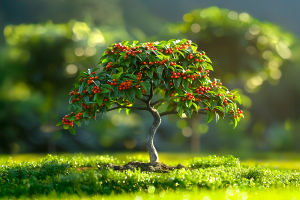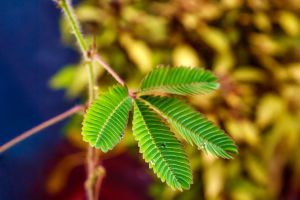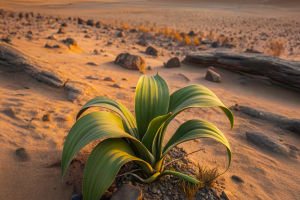Imagine a leaf that doesn't just sit in the sun but turns into a deadly, beautifully engineered trap.
That's exactly what happens in the pitcher plant (Nepenthes), a master of deception and one of nature's most elegant problem-solvers. For plants growing in poor soil, this carnivorous strategy is not just a quirky feature—it's survival.
Why a Leaf Became a Trap
In nutrient-poor environments, especially where nitrogen is scarce, most plants struggle to grow. Nepenthes, however, evolved a workaround: it turned part of its leaves into a deep, pitcher-shaped cavity filled with digestive fluid. The inside of this "jar" is waxy and slippery, making escape nearly impossible once an insect falls in.
The design is more than just clever—it's highly specialized. Studies from the Journal of Experimental Botany show that the pitcher's rim, called the peristome, becomes extra slippery when wet, ensuring that even the most careful ants or flies lose their footing. Beneath this rim, a mixture of digestive enzymes waits to break down the prey, releasing nutrients the plant can absorb directly.
The Lure of the Pitcher
This isn't a random trap—it's marketing genius in plant form. The pitcher plant uses a combination of:
1. Sweet Nectar: Secreted along the rim to draw in ants, beetles, and other insects.
2. Color Signals: Many species have vivid patterns and reddish hues that mimic flowers.
3. Fragrance: Some emit scents to mimic ripe fruit or floral blooms.
Once an insect steps inside, it's a one-way ticket to the plant's nutrient reserve.
Beyond Insects—Bigger Prey
While most pitchers catch small bugs, larger species have been documented trapping bigger animals such as small frogs or lizards—though this is rare and often accidental. What's more fascinating is how some pitchers form partnerships with animals instead of eating them.
For example, certain Nepenthes species provide a safe space for small tree shrews to feed on nectar. In return, the plant benefits from the animal's droppings, which are rich in nitrogen—a different kind of nutrient exchange.
The Science of Digestion
Once the prey is inside, the real magic happens. The liquid inside the pitcher is a blend of water, digestive enzymes, and sometimes symbiotic bacteria. Here's the step-by-step process:
1. The insect drowns quickly in the fluid.
2. Enzymes such as nepenthesin begin breaking down proteins and chitin (the tough exoskeleton).
3. Dissolved nutrients, especially nitrogen and phosphorus, are absorbed through the pitcher walls.
Researchers have found that the chemical composition of this digestive fluid changes depending on the prey caught—meaning the plant can adapt its "recipe" for maximum efficiency.
Growing Your Own Pitcher Plant
If you're tempted to have this miniature predator at home, it's possible—but it requires some care:
1. Light: Bright, indirect light is best.
2. Water: Use rainwater or distilled water; tap water can damage the roots.
3. Feeding: Outdoors, it will catch its own prey. Indoors, occasional feeding with small insects is enough.
4. Humidity: Needs high humidity—misting helps.
One important note: do not fill the pitchers with tap water or try to overfeed them; this can disrupt their natural balance.
Why It Matters for Science
Studying Nepenthes helps scientists understand how plants can adapt to extreme environments. Their ability to supplement diet with captured prey has inspired research in biomimicry, where engineers study natural designs to develop new technologies, such as self-cleaning surfaces or passive liquid traps.
Botanist Dr. Charles Clarke, who has spent decades studying pitcher plants, notes that "their evolution shows how flexibility in form and function can help organisms survive where others fail." In other words, the pitcher plant is living proof that creativity isn't just for humans—it's part of survival in the natural world.
Nature's Elegant Problem-Solver
The pitcher plant's beauty is deceptive—it's both a work of art and a deadly hunter. The next time you see one, remember that its glossy, patterned surface isn't just for show; it's a carefully engineered lure backed by millions of years of evolution.
Would you dare to grow a living trap at home and watch nature's tiny dramas unfold right on your windowsill? Sometimes, the most captivating garden residents are the ones that don't just survive—they outthink their environment.


